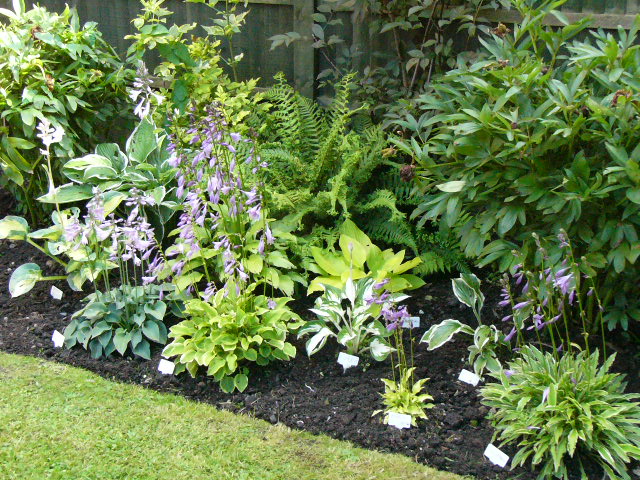Consider Variegated Plants in your Garden

Designing With Variegated Plants
Variegation in plants can take many different forms, from stripes to streaks, bands, chevrons, blotches and spots. It's important to pay close attention to these patterns to ensure resulting plant combinations are pleasing to the eye. But, combining stripes, dots and blotches or non-compatible color combinations creates a kaleidoscopic, unnatural look. Remember to exercise restraint, and focus on plants with similar color variations and patterns, as well as like or compatible forms and textures.
In the shade garden, plants with significant white, cream and yellow variegated foliage reflect light. Consider using drifts of variegated plants to highlight parts of the garden. Similarly, green foliage infused with silver, such as in the Japanese painted ferns (Athyrium niponicum 'Pictum',) not only reflects daylight but also moonlight. Another use for these plants is to create transitions between groups of differently colored plants, for this, variegated foliage will do the job. The eye is first attracted to the pattern and then moves to the single color masses on the flanks
Lots of Choices
When looking for variegated plants, there is certainly no shortage of choices. Here are some of my favorites: For woody or landscape type plants, I like the red-twig varigated dogwood (Cornus alba elegantissima), a hardy perforner that fills nicely and grows to about 4 to 5 feet in height and diameter. Another woody choice is the popular Euonymus fortunei cultivars, including 'Emerald Gaiety' (green with white edges), 'Emerald 'N' Gold' (green with gold edges), 'Gold Tip', 'Sunspot' and 'Surespot'. These adaptable plants can be used as ground covers or trained to climb trees, trellises, light poles and statue bases. For four-season color, try variegated evergreens. High on my list would be the eye-catching 'Gold Coast' juniper (Juniperus chinensis 'Gold Coast'). They add charm to the landscape, especially in winter
There are also some full-sun loving variegated perennials and ornamental grasses, including variegated maiden grass (Miscanthus sinensis 'Variegatus') and a few other types that are hardy in this area. Always a garden star are the colorful variegated hostas with artistic leaf paintings in yellow, gold, white and cream at the foliage centers and margins. Most hostas want shade, but many will thrive in sunny spots.
For those with smaller urban gardens, it's worth noting that many variegated species grow more slowly and exhibit smaller leaves then their all-green counterparts.
Not Without Some Reservations
Many variegated plants are the results of selective breeding, while some are mutants or so-called "sports", meaning a genetic mistake has occurred that affects the plant's green pigment. In the case of white and cream mutations, it is decreased production of chlorophyll (the molecule vital to photosynthesis that absorbs sunlight to produce the plant's food and green color). This makes some of them subject to foliar sunburn, dry-out and hail damage.Often the amount of light (or perhaps the lack of enough light) will change the amount of varigation in the plant. . Remedies include relocating the plants to more favorable sites.
Finally, not all variegated plants are timid and weaker performers. In fact, some can be downright thuggish. Take for example the very colorful chameleon plant (Houttuynia cordata) with its decorative white, green and pinkish-red coloration. These plants are rampant spreaders in a variety of habitats and care needs to be taken so that they stay where you want them.
While growing variegated plants may have some negatives, there is no question that they are striking plants for the shade garden. They are certainly worthy of a second look.
- Created on .